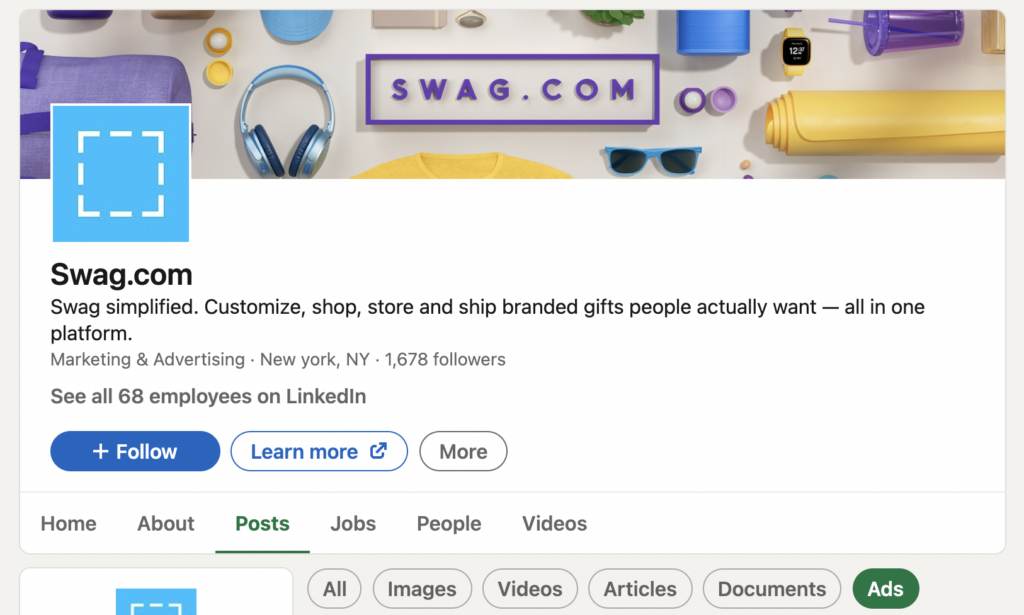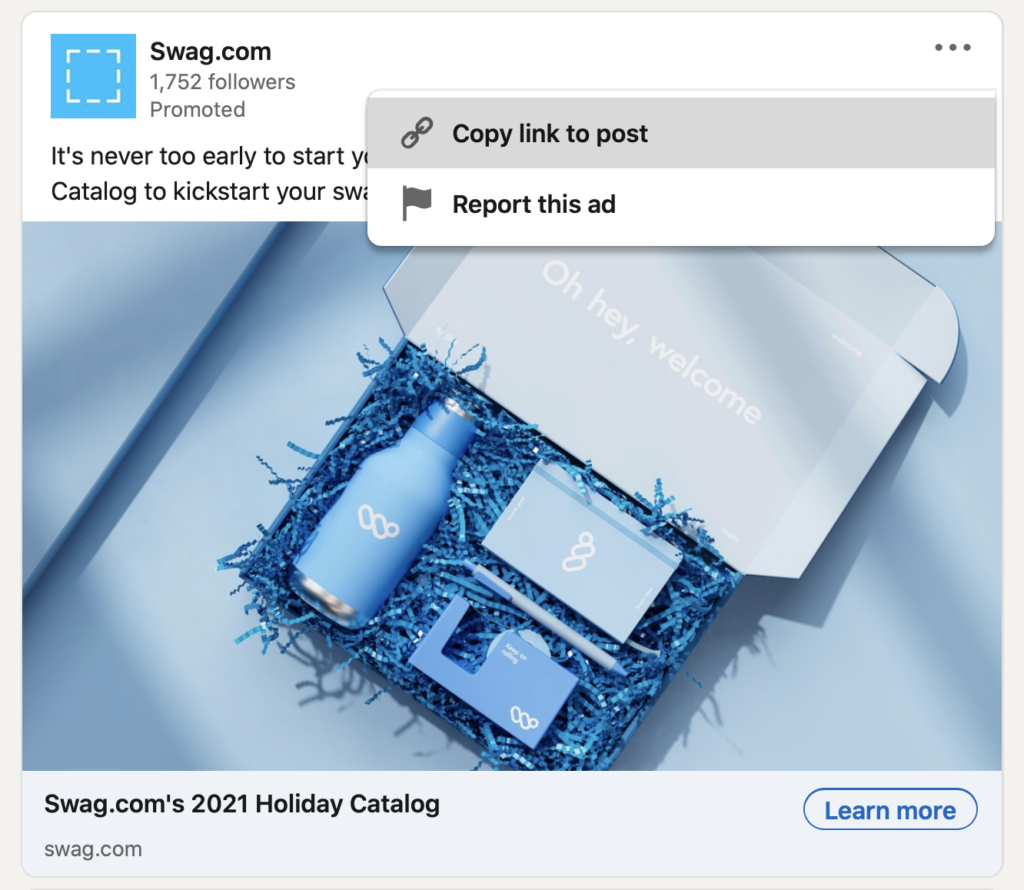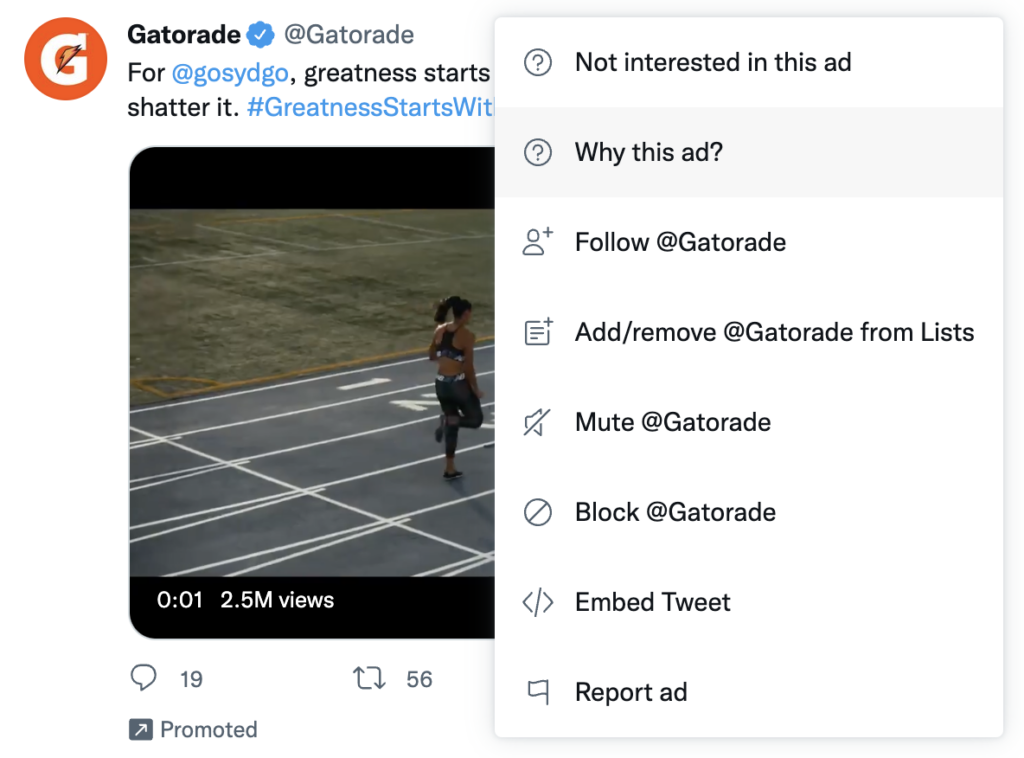Continue reading to find out more about the competitors’ ads on social media platforms.
#3: Research Competitors’ LinkedIn Ads
When a company decides to add advertisements into its social media marketing, LinkedIn isn’t the first site coming to mind. Facebook and Instagram, on the other hand, are far more popular for advertising. That isn’t to say you should completely disregard LinkedIn. With over 774 million users, it has the ability to create a lot of exposure for your company.
In order to discover what type of advertisements they’re running and how well they’re doing, before you get in, check to see whether any of your competitors are running LinkedIn advertisements. Then you’ll be able to determine whether it’s a worthwhile purchase for you. Here’s everything you need to know to get started.
Visit Your Competitor’s LinkedIn Page
Go to LinkedIn and look for your competitor’s profile. Once you’ve arrived, go to the main menu and choose Posts. Then you may choose from a variety of advertising based on the different sorts of posted material on the site. Even if you aren’t in their target demographic, you may read through all of your competitor’s current advertising. In this way, you are able to perform some vital research.

Discover More Insights About Each LinkedIn Ad
Although it isn’t as comprehensive as Facebook’s Ad Library. If you delve a bit further, you may uncover some useful information about LinkedIn advertisements. Unfortunately, you can’t filter advertising by media type or the number of impressions they’ve gotten on LinkedIn. You may, however, copy the link to the post by clicking the three dots in the top-right corner of the ad. Then, in a separate window, open the advertisement.

This lets you see how many people liked the post, indicating how well it resonated with its intended demographic. You may also read the comments written by others, which can provide you insight into what they think about your rival. If they’re talking about what they enjoy and don’t like, it might provide you with some ideas on how to improve your own marketing.
What to Pay Attention to in Your Competition’s LinkedIn Ads
There are a few things to look out for while researching LinkedIn advertising to help you create your own social media marketing:
- Examine the tone and messaging of the copy: If you want people to believe you and take action on what you’re marketing, it’s critical that you express your knowledge through your adverts. What are your rivals doing with their copy? Is their call to action compelling enough?
- Examine the level of involvement for each ad: Open each ad and see how much engagement each one receives. Is one sort of advertisement more popular than another? If this is the case, it’s a solid indication that this sort of material will be well received by your target audience.
#4: Research Competitors’ Twitter Ads
Twitter unveiled its Ads Transparency Center in 2018, allowing users to see all of the ads being run by any Twitter profile at any one moment. It worked in much the same manner as the Facebook Ad Library. Regrettably, this function was deleted in early 2021. This implies that viewers will no longer be able to view current advertisements.
So, if you want to discover more about the ads of your competitors on Twitter, you’ll have to do a little more digging. Here are some things to bear in mind.
Watch for the Competition’s Twitter Ads to Appear in Your Feed
You’ll have to wait till you come across one on your own because you can’t search for a rival by username and see all of the advertising they’re running on Twitter. You might attempt connecting with your competitor’s Twitter account in the hopes that one of their advertisements would show. Take a minute to analyze it if you do.
Take note of what jumps out in their writing, whether they’re utilizing an image or a video, and how much interaction the post has had thus far. Is there anything you can do with your advertisements to imitate it? Is there anything you could do better?
You may also click on the three dots in the top-right corner of the promoted tweet if you wish. When the choice opens, choose Why This Ad?, and Twitter will explain why you are part of the targeted audience, which can help you better target your advertising.

What to Pay Attention to on Your Competition’s Twitter Ads
Without an ad library, you’ll have to be very alert when scrolling through your Twitter feed to identify your competitors’ advertising. If you chance to come across one, consider the following information to help shape your own Twitter ads:
- Determine what makes their copy unique: Did they utilize all 280 characters on Twitter? Or did they decide to make it brief and to the point? Be open to experimenting with your text to determine what works best for your company.
- Check to see if they went with a picture or a video: Both are excellent possibilities for advertisements, but if you want to beat your competition, you must go above and beyond. Is it a stock picture, a shot they took, or something they made if they went with an image? How long did it take for a video?
- Read the comments for reactions: If there are comments on the ad, check to see what their target audience is saying and if it is favorable or negative feedback. As you learn about their interests and demands, this knowledge might help you strengthen your brand.
Conclusion
After researching your competitors’ advertisements on those platforms, you’ll probably be wondering how to put them to use.
Ideally, you would look at what kind of advertising is doing effectively for your competitors and utilize that information to create your social media marketing. If you find any parallels between their top-performing ads, you may use those methods on your own. For example, if their video commercials outperform those with static pictures, you’ll know to use the same strategy to the ads you make.
This study will, in the end, reduce the amount of time you spend performing testing with your ad campaigns. Examining your competitors’ advertisements allows you to have a better grasp of what constitutes a successful, high-converting ad based on the results they’re experiencing. In the process, you’ll also discover a lot about your audience, such as what they’re interested in and what connects with them.

